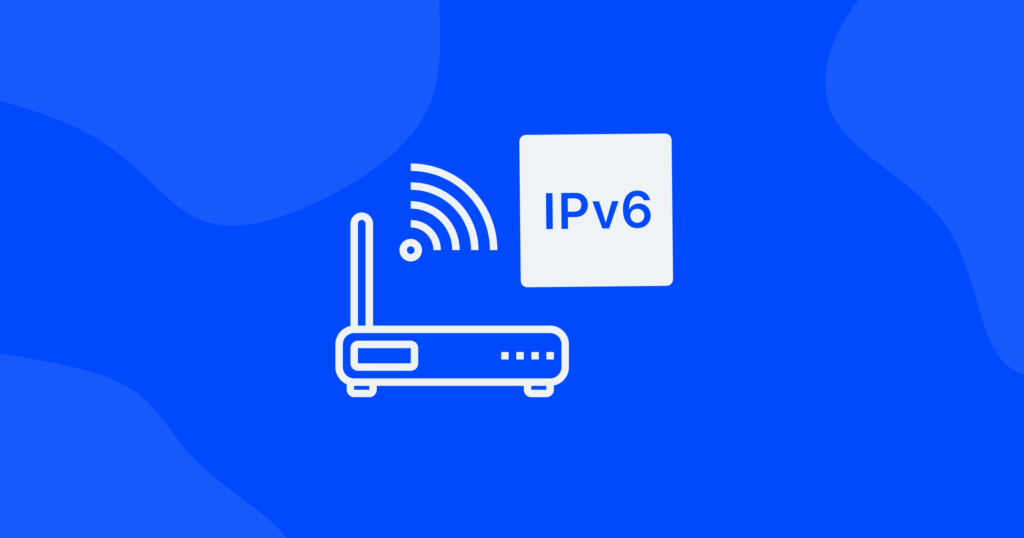

How To Disable IPv6: A Step-by-Step Guide

In this digital era, where connectivity is crucial, understanding the nuances of internet protocol versions can be a game-changer. IPv6, the latest iteration, holds great promise for the future, but what about IPv4, its predecessor? Should you disable IPv6 on your devices, or is it better to embrace the transition? As we unravel the mysteries surrounding these protocols, we’ll explore why users opt to disable IPv6 and the cautionary advice from IT experts.
What is IPv6 and what is so special about it?
IPv6, or Internet Protocol version 6, is the latest and most advanced version of the internet protocol, the system that allows devices to communicate with each other on the internet. It’s like a unique address for every device connected to the internet, enabling smooth and seamless communication.
What makes IPv6 special is its ability to offer a significantly larger pool of IP addresses compared to its predecessor, IPv4. Think of it as having more phone numbers available in a crowded city. With the increasing number of devices connecting to the internet — smartphones, tablets, smart home devices, and more — IPv6 ensures that there are enough unique addresses to go around.
IPv6 uses a 128-bit address format, allowing for an astronomical number of unique IP addresses — enough to meet the demands of the ever-expanding internet-connected world. This abundance of addresses not only enables more devices to be connected simultaneously but also enhances the efficiency and security of internet communication.
Moreover, IPv6 introduces other features that enhance the internet experience. It incorporates simplified network management, more efficient routing, and built-in support for secure communication. These advancements pave the way for better performance, improved reliability, and enhanced security across the entire internet infrastructure.
While IPv6 is designed to eventually replace IPv4, both protocols are currently operational, running side by side. However, it’s important to note that not all networks and internet service providers fully support IPv6 yet, which is why the transition is gradual.
Should you enable or disable IPv6?
Whether to enable or disable IPv6 depends on various factors and individual preferences. Here’s a concise breakdown to help you make an informed decision.
Device and network compatibility
Check if your devices, operating systems, and network equipment fully support IPv6. Enabling IPv6 allows you to take advantage of its benefits, such as improved performance and enhanced security. However, if your devices or network infrastructure don’t support it or have compatibility issues, disabling IPv6 may be a viable option.
ISP support
Ensure that your ISP fully supports IPv6. Some ISPs may still rely primarily on IPv4, while others have embraced IPv6. If your ISP offers reliable IPv6 connectivity, enabling it can provide a seamless and future-proof internet experience. However, if your ISP has limited or no IPv6 support, disabling it may be necessary to avoid potential connectivity issues.
Network security
IPv6 comes with built-in security features, making it more resilient to certain types of attacks. Enabling IPv6 can enhance your network’s security posture, especially when accessing websites and services that fully support IPv6. However, if you have specific security concerns or are using network equipment with known vulnerabilities related to IPv6, disabling it might be a temporary measure until those concerns are addressed.
Privacy considerations
IPv6 addresses can potentially reveal more information about your network and devices compared to IPv4. If privacy is a top concern, disabling IPv6 might be a consideration. However, it’s important to note that privacy concerns can also be mitigated through proper network configuration and the use of privacy-enhancing technologies.
How to enable/disable IPv6 on Windows 10
Enabling or disabling IPv6 on Windows 10 is a straightforward process. Just follow these steps.
- Open the Start Menu and click on the Settings (gear) icon.
- In the Settings window, select Network & Internet.
- Choose Ethernet or Wi-Fi (depending on your connection type).
- Scroll down and click on Change adapter options.
- Right-click on your active network connection and select Properties.
- In the Network Connection Properties window, uncheck the Internet Protocol Version 6 (TCP/IPv6) option.
- Click OK to save the changes.
Remember to restart your computer for the changes to take effect. If you encounter any issues or need further assistance, consult your network administrator or refer to Microsoft’s official documentation for additional guidance.
How to disable IPv6 on macOS
To enable IPv6 on macOS:
- Click on the Apple menu () in the top-left corner of your screen.
- Select System Preferences from the drop-down menu.
- In the System Preferences window, click on Network.
- From the list of network connections on the left, choose the one you’re currently using (Ethernet, Wi-Fi, etc.).
- Click on the Advanced button in the bottom-right corner.
- In the Advanced settings window, go to the TCP/IP tab.
- Next to “Configure IPv6,” choose Off from the drop-down menu.
- Click OK to save the changes.
Remember, it’s generally recommended to leave IPv6 enabled unless you have specific reasons or requirements to disable it. Disabling IPv6 may limit your network’s compatibility and potential benefits.
How to disable IPv6 on iOS
To enable or disable IPv6 on iOS:
- Open the Settings app on your iOS device.
- Scroll down and tap on Wi-Fi.
- Locate your connected Wi-Fi network from the list and tap the “i” (information) icon next to it.
- On the Wi-Fi network details screen, scroll down and tap on Configure IP (or Configure IPv6).
- To disable IPv6, tap on Manual, then you can remove the IPv6 address if one is listed (not always present).
- Tap Save or Apply to save the changes.
How disable IPv6 on Android
To disable IPv6 on Android:
- Open the Settings app on your Android device.
- Scroll down and tap on Network & internet or Connections (depending on your device).
- Tap on Wi-Fi.
- Find your connected Wi-Fi network from the list and tap on it.
- Tap on Edit or Modify network (the exact wording may vary).
- Scroll down and look for IP settings or IP protocol.
- To disable IPv6, select Static or IPV4 only (options may vary).
- Tap on Save or Apply to save the changes.
What are the possible drawbacks of disabling IPv6?
- Future-proofing. IPv6 is designed to address the increasing demand for IP addresses in the evolving digital landscape. By disabling IPv6, you may miss out on the potential benefits it offers as the internet continues to grow. As more devices connect to the internet and IPv6 support becomes more prevalent, enabling IPv6 ensures compatibility and optimal performance for future technologies and services.
- Compatibility issues. Disabling IPv6 can lead to compatibility problems, especially as the internet transitions towards widespread adoption of IPv6. Some websites, applications, and services may rely on IPv6 for optimal performance or may even require it for proper functionality. Disabling IPv6 might result in limited access or reduced functionality when interacting with such IPv6-dependent resources.
- Network performance. Disabling IPv6 can also impact your network performance in certain scenarios. ISPs and content providers are increasingly implementing IPv6 to optimize network routing and reduce congestion. By disabling IPv6, you might experience suboptimal routing, slower speeds, or increased latency when accessing websites or services that fully support IPv6.
- Security considerations. IPv6 includes built-in security features, such as IPsec, which can enhance the confidentiality and integrity of your network communications. Disabling IPv6 might result in the loss of these security benefits. While alternative security measures can be implemented, relying solely on IPv4 may introduce additional complexities and potential vulnerabilities.
Conclusion
The decision to enable or disable IPv6 depends on various factors, such as device compatibility, network support, security considerations, and personal preferences. While there may be situations where disabling IPv6 is necessary, it’s important to be aware of the possible drawbacks that come with it, such as compatibility issues and missed opportunities for future benefits.
As you navigate the realm of network configurations, it’s crucial to remain vigilant about your online privacy and security. An important aspect to consider is your IP address, which is a unique identifier assigned to your device on the internet. If you’re curious to learn more about how your IP address can be revealed, what someone can do with it, and how to protect your anonymity online, we recommend checking out our article “Revealing Your IP Address: A Gateway to Cybercrime and Online Threats“.



